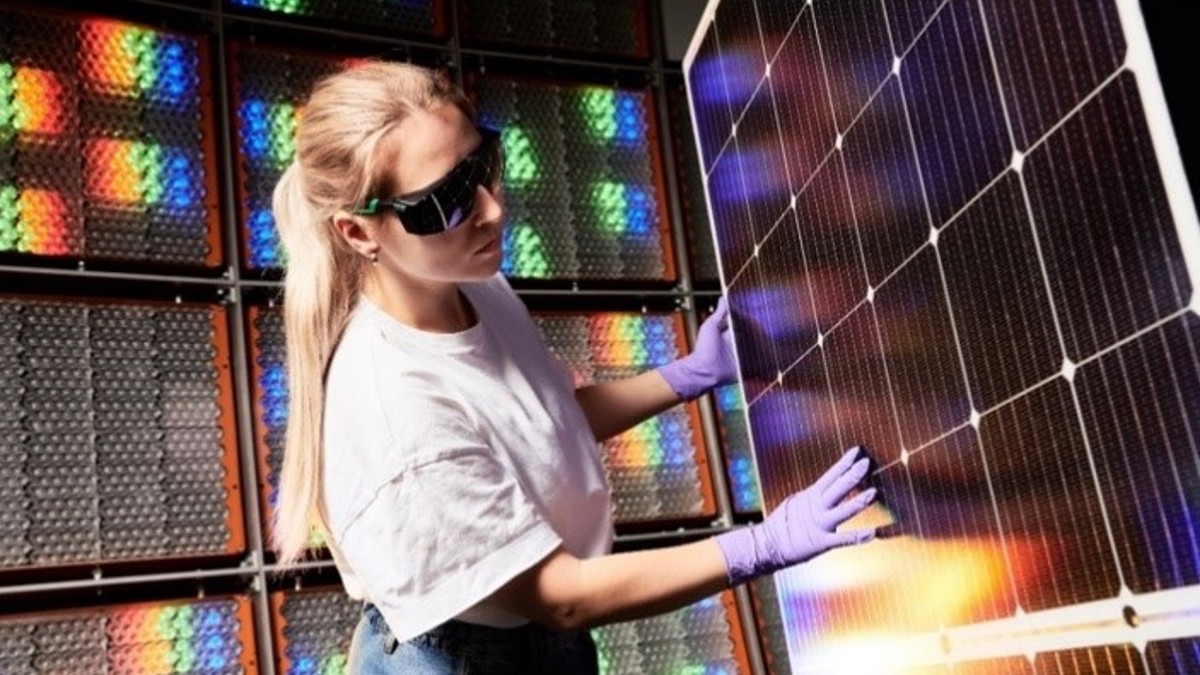
Oxford PV, a spin-off from the University of Oxford, says it’s achieved the world record for the most efficient solar panel.
In collaboration with Germany’s Fraunhofer Institute for Solar Energy Systems, the company says its solar panel achieved 25% conversion efficiency – the percentage of solar energy shining on a panel converted into electricity. That’s a big deal compared to the more typical 16-24% in commercial solar panels.
Oxford PV’s secret sauce is perovskite-on-silicon tandem solar cells, which could theoretically hit over 43% efficiency, leaving traditional silicon solar cells with a theoretical limit of less than 30% in the dust. Its record-setting panel cranked out 421 watts over an area of 1.68 square meters. The researchers used standard mass production gear and optimized it for the tandem technology.
Oxford PV, which has a production line near Berlin, used Fraunhofer’s multispectral solar simulator to verify its world record efficiency claim. It’s like re-creating natural sunlight in a lab to test the panel’s perovskite and silicon layers.
What’s more, Oxford PV has already hit a 28.6% efficiency record for its commercial-sized perovskite-on-silicon tandem solar cell and says it has a clear roadmap to take that technology beyond 30% efficiency.
Why’s this important? Solar power is the MVP of renewable energy, making up a massive chunk of new clean energy sources. By upping the efficiency game, Oxford PV’s solar panels have the potential to change the landscape with more power from the same space, which means cheaper electricity and a faster shift to clean energy.
Chris Case, chief technology officer at Oxford PV, said, “Our record-breaking solar panels demonstrate that we are on the cusp of the next solar revolution, which will be delivered, in part, by our tandem cell technology.
Top comment by Actually Thoughtful
We should ask a LOT of questions about warranty and life span. Perovskite has long shown promise, but the challenge has been longevity and robustness in the sun
“2024 is set to be a pivotal year for Oxford PV, as the company scales up manufacturing and continues to progress plans for a new factory to produce its tandem solar cells in high volumes.”
Read more: The US’s largest solar + battery storage project just came online
To limit power outages and make your home more resilient, consider going solar with a battery storage system. In order to find a trusted, reliable solar installer near you that offers competitive pricing, check out EnergySage, a free service that makes it easy for you to go solar. They have hundreds of pre-vetted solar installers competing for your business, ensuring you get high quality solutions and save 20-30% compared to going it alone. Plus, it’s free to use and you won’t get sales calls until you select an installer and you share your phone number with them.
Your personalized solar quotes are easy to compare online and you’ll get access to unbiased Energy Advisers to help you every step of the way. Get started here. – ad*
FTC: We use income earning auto affiliate links. More.



Comments